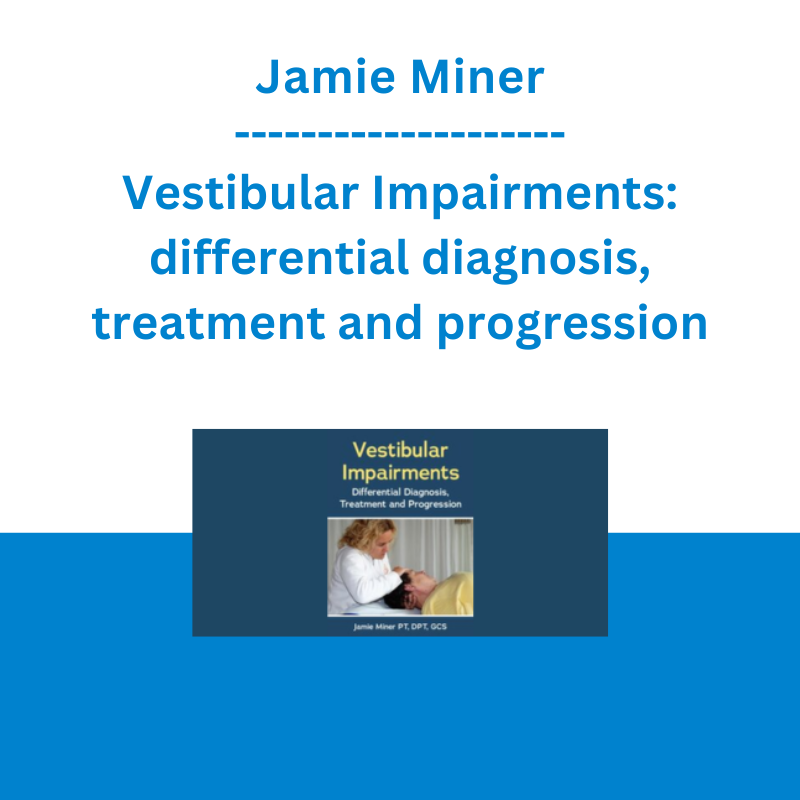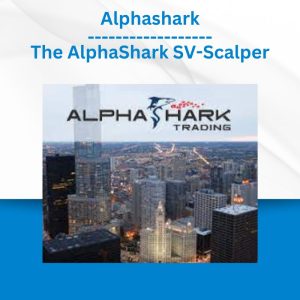*** Proof of Product ***
Exploring the Essential Features of “Jamie Miner – Vestibular Impairments: differential diagnosis, treatment and progression”
Vestibular Impairments: differential diagnosis, treatment and progression
Speaker: Jamie Miner, PT, DPT, GCS
Duration: 1 Hour 55 Minutes
Format: Audio and Video
Description
Many patients of all ages report problems with dizziness. Dizziness is reportedly accountable for 20% of all visits to doctors. It is important that all healthcare providers understand the causes and treatments of dizziness. Rehab professionals need to be able to recognize and recommend the correct treatment for these patients with vestibular impairments. This course allows participants the ability to progress their patients through the best treatment options and provides great outcomes based on evidence and experience.
Speaker
Jamie Miner, PT, DPT, GCS
Jamie Miner, PT, DPT, GCS, provides specialized services to many skilled nursing facilities and earned geriatric clinical specialist designation through the American Physical Therapy Association. She has experience in home health, acute care, outpatient vestibular rehab and fall prevention, acute rehab, sub-acute rehab, and long-term care. Additionally, she serves as a clinical instructor to many doctoral physical therapy students. Jamie graduated with a BS degree in PT from UNC Chapel Hill, a DPT from Shenandoah University in March 2003.
Speaker Disclosures:
Financial: Jamie Miner has employment relationships with Gallowayridge Rehabilitation and Sunnybrook Skilled Nursing Facility. She receives a consulting fee, speaking honorarium, and recording royalties from PESI, Inc. She has no relevant financial relationships with ineligible organizations.
Non-financial: Jamie Miner is a member of the American Physical Therapy Association, the Neurology Section and Academy of Geriatric Physical Therapy, and the Vestibular Disorders Association. She serves on the North Carolina Board of Physical Therapy Examiners.
Objectives
- Learn to recognize signs and symptoms of a vestibular unilateral and bilateral weakness and related peripheral vestibular disorders.
- Choose the best outcome measures to measure progress.
- Design and progress treatment interventions for each individual.
Outline
Discuss the most common peripheral vestibular disorders
- Vestibular neuritis
- Labyrinthitis
- Unilateral vestibular loss
- Motion sensitivity
- Meniere’s disease
- Perilymphatic fistula
- Superior Canal Dehiscence Syndrome
- PPPD
- Bilateral vestibular loss
Understand the anatomy and common mechanisms of dysfunction in the vestibular symptoms
- Symptoms of vertigo and oscillopsia
Demonstrate ocular motor examination and understand results with practice with partners
Progression of vestibular ocular rehab for adaptation (gaze stabilization)
Progression for visual dependence for balance
Progression for sensory dependence and bilateral vestibular weakness
Target Audience
- Physical Therapists
- Physical Therapy Assistants
- Occupational Therapists
- Occupational Therapist Assistants
- Chiropractors
- Exercise Physiologists
- Strength and Conditioning Coaches
- Athletic Trainers
Please see the full list of alternative group-buy courses available here: https://lunacourse.com/shop/










 Racing Workshop - Complete Online Package
Racing Workshop - Complete Online Package  Greg Loehr - Advanced Option Trading With Broken Wing Butterflies
Greg Loehr - Advanced Option Trading With Broken Wing Butterflies